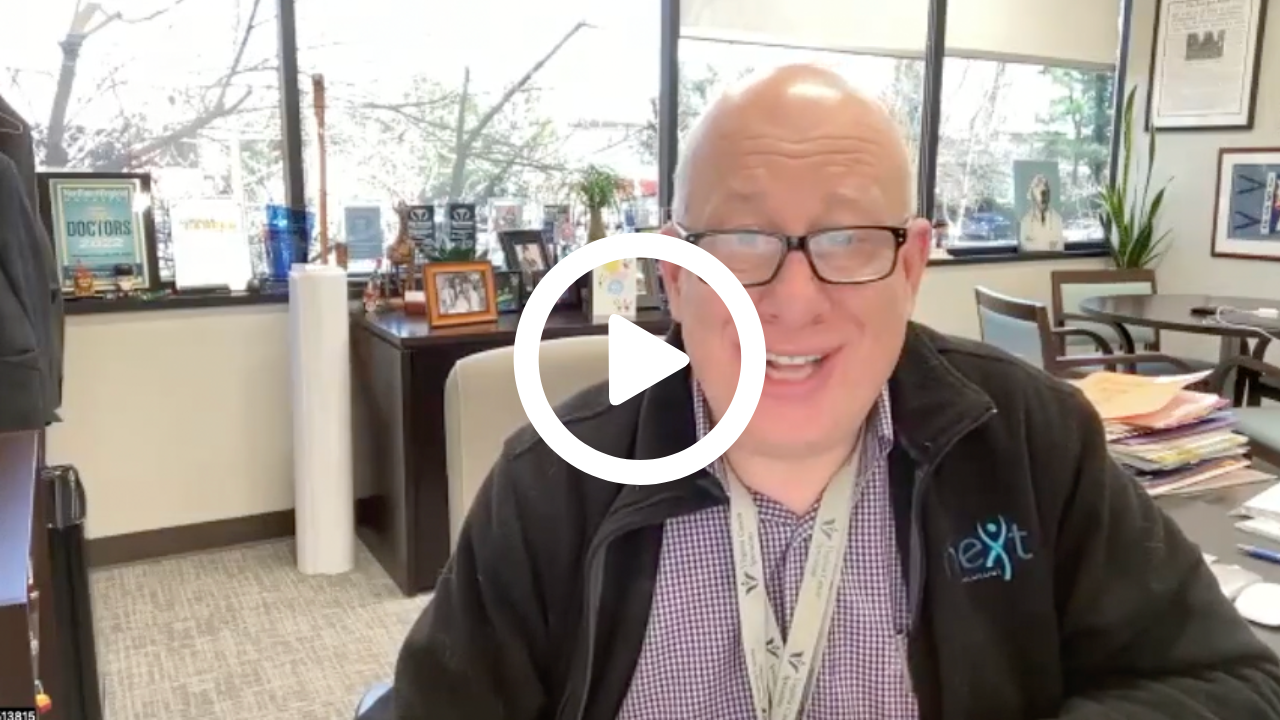Identifying Mechanisms for the Mediation of Poziotinib Resistance in EGFR Exon 20-Mutant NSCLC
In an interview with <em>Targeted Oncology</em>, John V. Heymach, MD, PhD, discussed the phase II study to identify mechanisms of acquired poziotinib resistance and the other available agents for targeting <em>EGFR</em> exon 20–mutant NSCLC.
John V. Heymach, MD, PhD

John V. Heymach, MD, PhD
An analysis presented at the 2019 World Conference on Lung Cancer (WCLC) explored the mechanisms of resistance to poziotinib in patients withEGFRexon 20mutant non–small cell lung cancer (NSCLC). The investigators of the study found thatEGFR-dependent mechanisms, such as T790M, can possibly resolve resistance to poziotinib. These results align with those seen with other EGFR tyrosine kinase inhibitors (TKIs).
In the laboratory analysis, researchers treatedEGFRexon 20 insertion genetically engineered mice with poziotinib until disease progression. Once the mice progressed, the investigators used a reverse phase protein assay and whole-exome sequencing (WES) to evaluate protein and tumor DNA.
Samples were also taken from 20 patients treated in the phase II study (NCT03066206) of poziotinib. After 8 weeks of treatment (baseline), optional and mandatory serial cell-free DNA biopsies were obtained. More biopsies were also obtained at progression and both were evaluated using either next-generation sequencing or WES.
The presence of ErbB4 and KRAS were seen in the mice as a result of treatment with poziotinib and identified as targetable bypass pathways. Additionally, activation of MAPK, AKT, ERK, and MEK was higher in resistant mice tumors compare with sensitive tumors. This finding led investigators to believe that poziotinib acquired resistance is associated with the reactivation of MAPK/PI3K pathways.
In 20 responding patients from the study, results were parallel to the laboratory analysis. Four patients showed acquiredEGFRtyrosine kinase domain point mutations, including T790M, V774A, and D770A. They also found that cells expressing bothEGFRexon 20 insertion and T90M, which could indicate that T790M drives poziotinib resistance.
So far in the study,PI3KCAE545L mutation, MAP2K2S94L mutation,METamplification,EGFRamplification, andCDK6amplifications have all been identified as potential acquiredEGFR-independent resistance mechanisms in these patients.
In an interview withTargeted Oncology, John V. Heymach, MD, PhD, professor and chair of the Department of Thoracic/Head and Neck Medical Oncology, The University of Texas MD Anderson Cancer Center, discusses the phase II study to identify mechanisms of acquired poziotinib resistance and the other available agents for targetingEGFRexon 20mutant NSCLC.
TARGETED ONCOLOGY: Can you discuss the TKIs available for targetingEGFRexon 20mutant NSCLC?
Heymach: It's an exciting time now becauseEGFRexon 20 is a population of patients for which we haven't had any effective targeted agents. Now, suddenly, we have had a rush of different drugs into the space. We conducted a study of poziotinib and there's also some exciting data from Takeda Oncology on the TAK-788 compound. There are also other drugs that are coming out in the space and several going into clinical studies.
I think the good news is that there will be options forEGFRexon 20 in the future. Ideally, as more drugs come into the space, we'll be able to tailor our treatments more effectively.
TARGETED ONCOLOGY: Can you discuss the study background? What questions did you set out to answer?
Heymach: The study we presented at WCLC is looking at mechanisms of resistance from our original investigator-initiated poziotinib study. As a reminder, in the original study we reported on data from 44 patients and there was a confirmed objective response rate of 43% and a best objective response rate of over 50% for these patients.
Resistance did eventually emerge, and the median progression-free survival was about 5 and a half months.
This was a study that was presented by Yasir Elamin from MD Anderson Cancer Center and the preclinical work was done by Jacqulyne Ponville Robichaux. We had plasma and tissue profiling at baseline, during treatment, and at the time of the emergence of therapeutic resistance. We profiled all of that using the LBP-70 and that's a plasma profiling based on the Guardant360 profile done at MD Anderson Cancer Center.
TARGETED ONCOLOGY: What were the results of this study?
Heymach: We saw a number of interesting things. First of all, there wasn't a single resistance mechanism that emerged in these patients. There was a variety of different mechanisms, which is similar to what we've seen in our studies of osimertinib (Tagrisso) and others that there are diverse ways a tumor can become resistant. Among some of the [mechanisms of resistance] we saw in more than one patient, one was T790M secondary mutations. T790M is associated with resistance to first-generation TKIs, but it now can cause resistance to poziotinib in the setting ofEGFRexon 20. That was seen in a couple of patients and there was one at baseline who had T790M as well. We also saw additionalEGFRexon 20 mutations that occurred. This told us that if you have one mutation, sometimes an additional mutation within exon 20 can occur to cause resistance.
We also saw other pathways get turned on. For example, aPIK3CAmutation occurred in some patients. We sawKRASalterations, copy gains in CDK4/6, and all of this is similar to what has been seen for the spectrum of resistance mutations for other EGFR inhibitors.
As part of this study, we went back to the lab and said, does this alteration really cause resistance and we've looked at that for a number of the different alterations so far. We can say, for example, that if you go back in the lab and put in T790M, it clearly does cause resistance there as well. And, we're looking through these other resistance mechanisms to see which ones are bonafide drivers of resistance.
Finally, we went into the lab and we treated myosin and we looked at cell lines treated with poziotinib to see what had emerged with resistance. There we saw some that we similar to what we saw in patients but there were some different ones that were also seen in mice and cell lines. It remains to be seen whether those resistance mechanisms do turn out to be important in patients. One in particular that we see in the lab is C797S, which also causes osimertinib resistance. We haven't seen that in patients yet, but it’s possible that with future treatment we will.
TARGETED ONCOLOGY: What are the next steps with this research?
Heymach:We're going to continue with the studies of poziotinib resistance and one of the things we would like to figure out is if there are obvious combination regimens that emerge from this. Secondly, if there are common mutations that cause resistance, can a different potentially inhibit those resistance mutations? This is much in the same way as with first-generation inhibitors you had T790M and an inhibitor was developed to target T790M. Can other inhibitors be developed for the resistance that emerges from poziotinib? That's something we're excited to pursue further in the lab.
TARGETED ONCOLOGY: Overall, what is your outlook on the treatment landscape forEGFRexon 20mutant NSCLC?
Heymach: I think this is an exciting time because multiple drugs offer potential options for patients with exon 20 mutations in the future, and I think that's a win for the whole field.
Reference:
Elamin Y, Carter B, Altan M, et al. Identification of Mechanisms of Acquired Resistance to Poziotinib in EGFR Exon 20 Mutant Non-Small Cell Lung Cancer (NSCLC). Presented in: Proceedings of the 2019 World Conference on Lung Cancer; September 7-10, 2019; Barcelona, Spain. Abstract 2904.
Kim Evaluates New Regimens for EGFR+ Lung Cancer
January 20th 2025During a Community Case Forum event in partnership with the Medical Oncology Association of Southern California, Edward S. Kim, MD, MBA, discussed the FLAURA2 and MARIPOSA trials of newer regimens for EGFR-positive lung cancer.
Read More
Amivantamab/Lazertinib Maintains OS Benefit in EGFR+ NSCLC
January 15th 2025During a Case-Based Roundtable® event, Joshua K. Sabari, MD, continued discussion of key outcomes from the MARIPOSA trial and toxicity management in patients with EGFR-mutated non–small cell lung cancer in the second article of a 2-part series.
Read More









